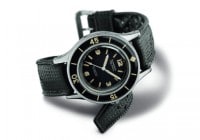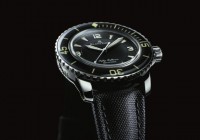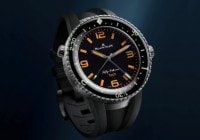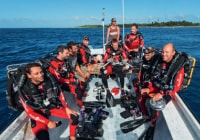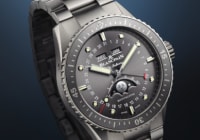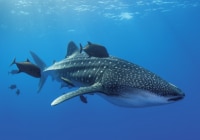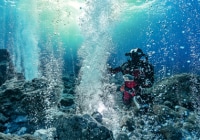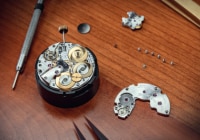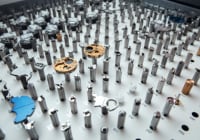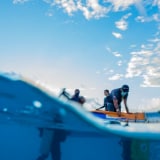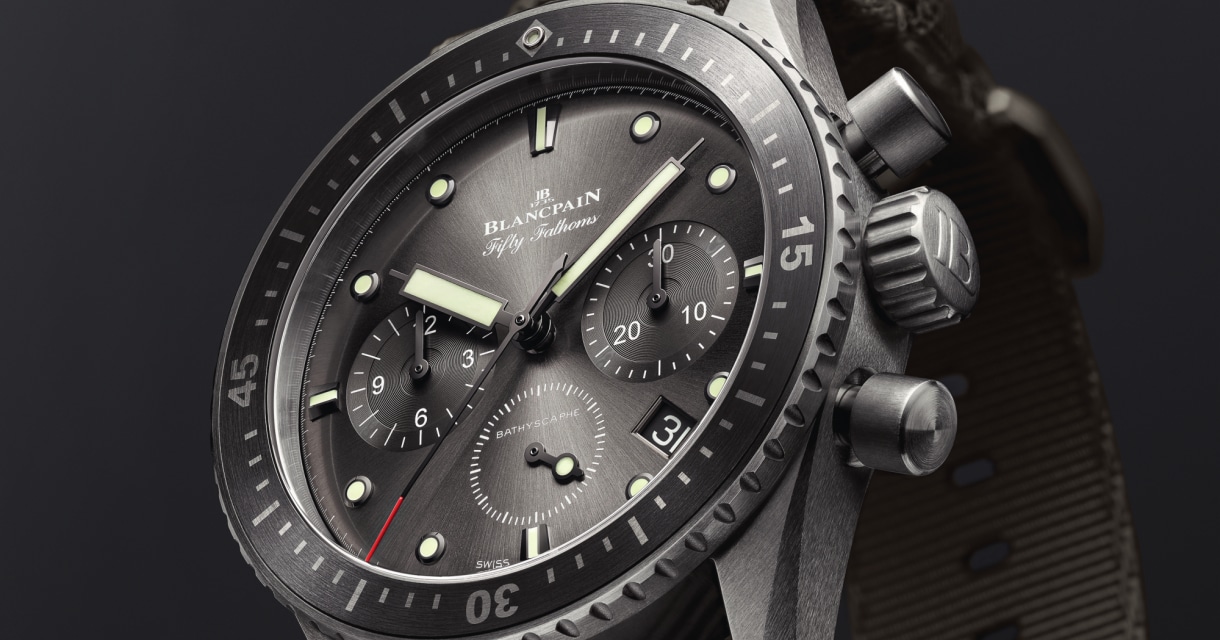
Search in Issues
Chapters
List of parts
Chapter 4
TECHNICAL DIVING and Rebreathers
The evolution of technical diving from open systems to rebreathers.
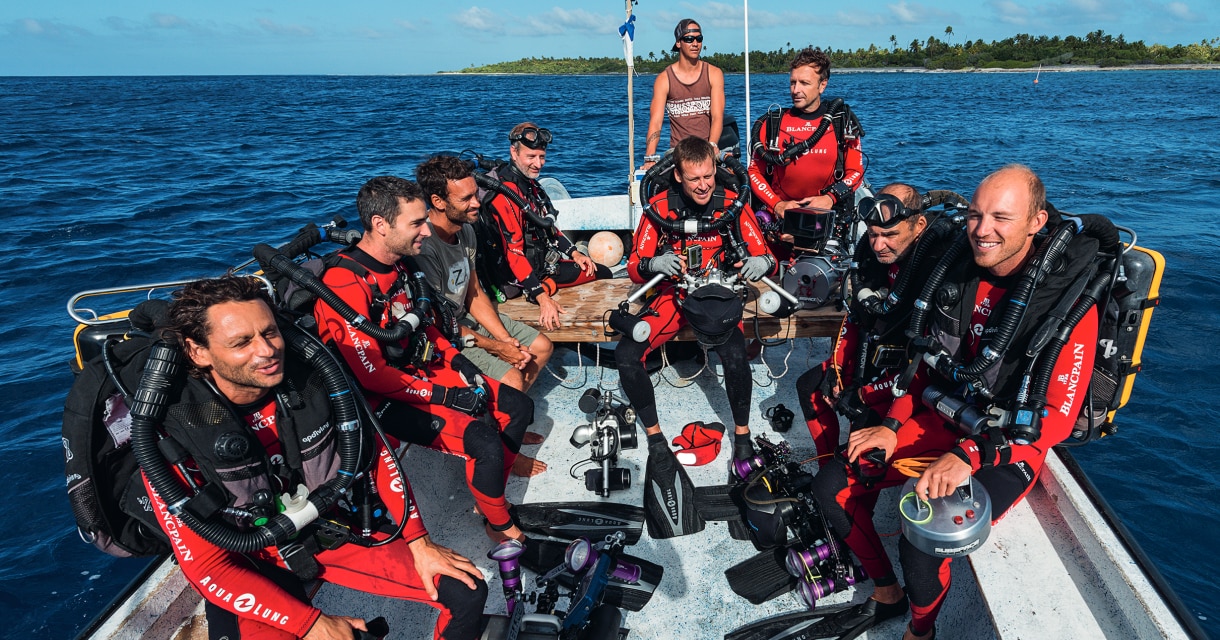
The sea is everything! It covers seven tenths of the globe. Its breath is pure and healthy. It is a vast desert where human beings are never alone, as they sense life quivering beside them. The sea is a mere vehicle of a supernatural and extraordinary existence; it is pure movement and love; it is the living infinite.
Anyone who has followed Captain Nemo in Twenty Thousand Leagues Under The Seas will soon understand why the ocean and diving watches go hand in hand. Underwater, space and time merge into the living infinite cited by Nemo. This could explain why our sporty and technological contemporaries always want to spend more time underwater.
It is often said that diving is space travel in miniature, but since marine biologist Laurent Ballesta has been sharing his underwater explorations through various media channels, it has become clear that even this miniature space travel could not be done without high-tech equipment, at least not if you want to reach the limits of feasibility – and in this Frenchman’s case, push beyond them.
On the 70th anniversary of the first modern diving watch, we are delighted to bring you the latest in cutting-edge diving technology; the very best, uncompromising technology enabling divers like Laurent Ballesta to dive longer and deeper than anyone has previously attempted.
Inspiration can be drawn from Nemo’s prophecy: I discovered it, ventured into it, and before long, sir, you too will have entered [my underwater world] – and why shouldn’t he be right?
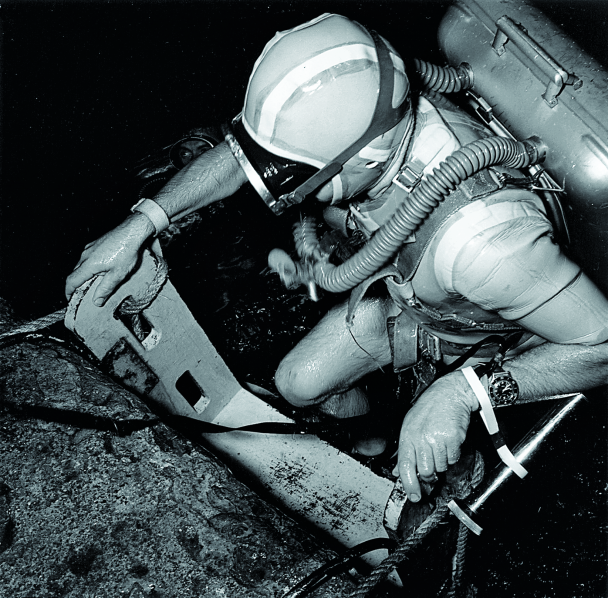
After the first (Italian) military divers switched from oxygen rebreathers to compressed air diving equipment, dive timing became an important part of dive safety. Prior to that, water-resistant watches were used exclusively as mission timers, as dive time with oxygen rebreathers was irrelevant in terms of decompression.
The French Navy was the first to equip its combat swimmers with modern diving watches – and as we know, these were Fifty Fathoms models.
DIVING FOR ALL
In 1943, Jacques-Yves Cousteau and Émile Gagnan developed the Aqualung, a pressure regulator that was controlled by ambient pressure. Combined with a compressed air cylinder, it initiated the popularisation of scuba diving. It thus became possible to venture down to about 60 metres, in exchange for a little decompression on the way back up. However, managing this decompression would require the ability to measure time, and the diving watch designed by Jean-Jacques Fiechter thus became an indispensable tool accompanying new explorers.
Some were already dreaming of going further, much further, yet several difficulties stood in the way of the quest for the depths.
‘RAPTURE OF THE DEEP’
This is a form of narcosis due to breathing nitrogen (of which air contains 79%!) under pressure. The deeper one dives, the more this depth intoxication is felt, becoming very dangerous after 60 metres. It causes poor movement coordination, an inability to concentrate, and a loss of judgement. Jacques-Yves Cousteau’s crew member Maurice Fargues sadly experienced this during an attempt to set a depth record using air at 120 metres. In September 1947, he was the first diver to die using the new Aqualung.
Albert Benhke had nonetheless described this phenomenon in as early as 1935, explaining the causes and proposing a solution.
To go deeper, nitrogen would have to be replaced by another ‘neutral’ gas with a less narcotic effect, namely helium. It was the Americans who were to do the ground-work, as they were the only ones to have this gas until the early 1960s and it was not until the start of the 1980s that certain recreational divers were able to avail themselves of it.
THE DIFFICULTY IN DOSING OXYGEN: NEITHER TOO MUCH, NOR TOO LITTLE
The oxygen content in the breathing mixture is an even more difficult problem to solve.
Dives with pure oxygen rebreathers (such as the Henry Fleuss 1879 attempt and thereafter) have demonstrated the dangers of oxygen (hyperoxia) when breathed in pure beyond a depth of a few metres.
Hans Hass used this type of rebreather to bring back his magnificent underwater images, and he often took reckless risks by using it to a depth of around 20 metres. Others have been less fortunate.
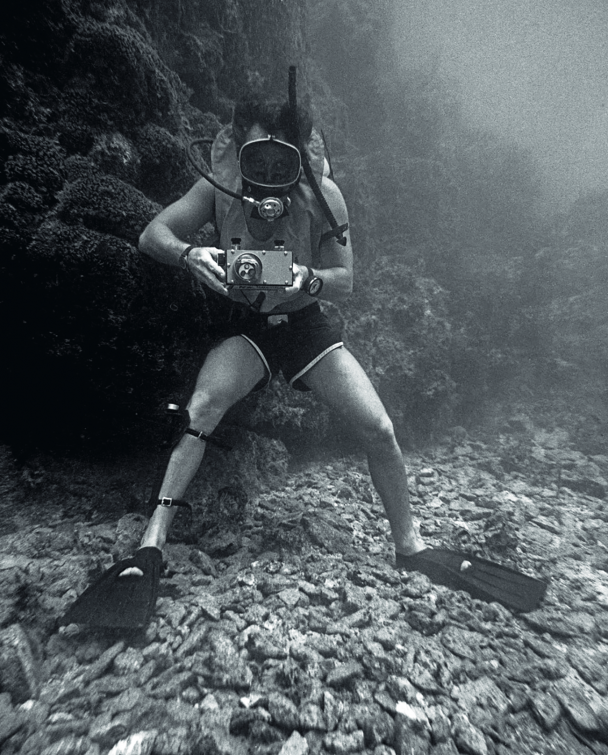
A safety-conscious diver never dives without a reliable watch and depth gauge. Here, exploring a freshwater hot spring in Death Valley.
The practice of scuba diving for recreational sports purposes spread rapidly throughout the world, and underwater photography became a favourite activity of diving enthusiasts.
Today, the maximum value for oxygen pressure in diving is 1.6 bar; for very long dives, this is reduced to 0.5 bar to avoid pulmonary lesions. The notion of partial pressure is not always easy to grasp. To put it simply, let’s say that at 100 metres, one should ideally have 12% oxygen in the mixture breathed and that, at the surface, one could breathe 100% oxygen. This illustrates that the ideal percentage varies with depth.
We also know that a minimum of oxygen is vital, meaning there must neither be too much nor too little of it.
On the other hand, during deep dives, the breathing mixture needs to contain a significant proportion of ‘neutral’ nitrogen or other ‘neutral’ gases like helium, in addition to small amounts of oxygen. It is the absorption and retention of these neutral gases that necessitates decompression stops, meaning that the more oxygen there is, the less neutral gas there is and thus the faster the decompression. Ideally, to lower decompression times, divers should breathe a mixture containing as much oxygen as possible, while always remaining below the toxic limit.
AUTONOMY
When breathing underwater from a compressed gas cylinder, consumption increases with depth. At 50 metres, a diver consumes six times more than at the surface. Deep divers have to use larger tanks (15, 18 or 20 litres) or very high pressures, implying several tanks and/or high-pressure-rated tanks (300 bar).
OPEN-CIRCUIT TECHNICAL DIVING
A deep mixed dive is one that starts with oxygen-enriched gas used from the surface to about 20 metres. Going deeper implies using another gas that is low in oxygen and high in helium. On the way back up, the diver changes tanks several times to breathe mixtures that are increasingly rich in oxygen and accordingly poor in helium.
It is thus easier to grasp why this new diving practice became known as ‘technical diving’.
Measuring the time spent underwater gradually became more crucial than ever, but here too, this meant pushing the limits of the graduated rotating bezel initially designed to time just one hour.
With the advent of mixed gas diving, some divers embarked on a quest to reach great depths. While some successfully reached the 200-metre zone (Jochen Hasenmayer, Fontaine-de-Vaucluse, September 1983), others lost their lives attempting 300 metres (Sheck Exley, Rio Mante in Mexico, April 1994).
ENTER SIMPLIFICATION
With open-circuit technical diving, it became apparent that the number of tanks and the incredible waste of gas were serious handicaps. It was at this point that the rebreather returned to the forefront.
On the one hand, gas economisers (semi-closed rebreathers, or SCRs) were designed and on the other, devices were developed that completely recycled the exhaled gas (closed-circuit rebreathers, or CCRs). While semi-closed rebreathers had only limited success, mainly because they are less versatile, there was a time when nothing else was available (French Navy DC55).
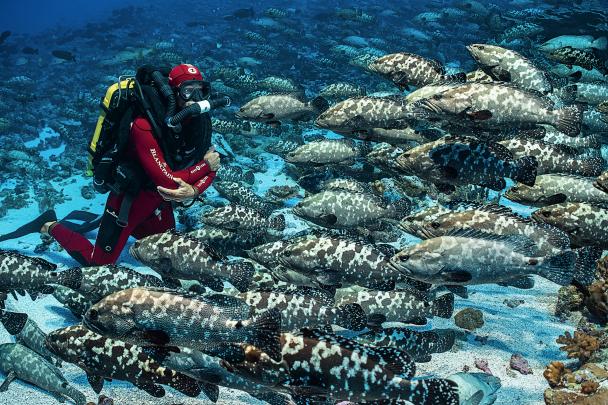
Without bubbles or noise, a diver can approach animals far more easily – another advantage of the rebreather.
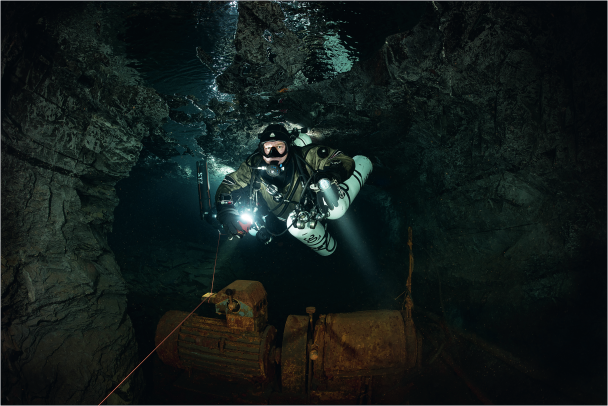
In open-circuit diving, divers must carry significant quantities of gas in several large tanks, generally containing different mixtures that must be used at the correct depth.
While open-circuit diving is a fairly simple technique to use, the diver must be careful not to make mistakes when changing gas mixtures.
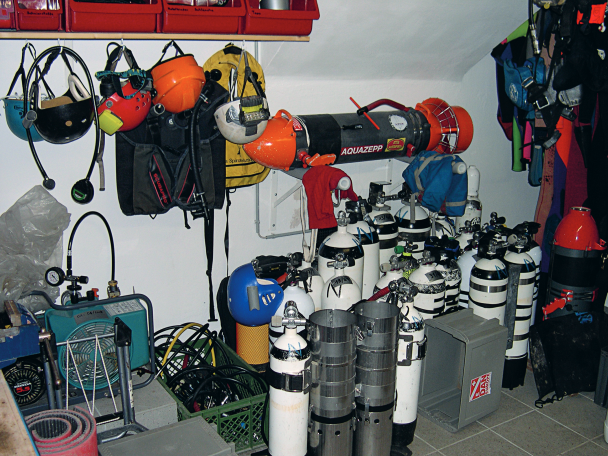
A tech diver’s garage, featuring numerous tanks for different gases, a scooter, a compressor, etc.
In 1968, Walter Stark and John Kanwisher developed the first closed-circuit rebreather to feature electronic oxygen management. This electronic rebreather (eCCR) was the first of a long line with similar characteristics.
Although all of them contain a breathing loop and a carbon dioxide cleaning system, they are also equipped with two small tanks: one of pure oxygen, the other of a diluent (air or trimix).
A small sensor measures the oxygen in the breathing loop and sends the information to a computer. The latter decides when to open the oxygen solenoid valve to bring the partial pressure of the oxygen back to the right value. The system thus maintains optimum oxygen content and divers know what they are breathing thanks to a display.
With two small two-litre bottles and a little soda lime, divers can do the same thing as with the large quantity of tanks needed in an open circuit. Indeed, the only gas consumed is oxygen and a diver at rest needs about 0.7 litres per minute. The small two-litre tanks at 200 bar therefore ensure a theoretical autonomy of several hours.
The gas in the second tank (diluent) is used to supplement the oxygen in the breathing loop. As the depth increases, the pressure compresses the breathing bag and it becomes necessary to compensate for this by adding diluent in order to breathe comfortably again.
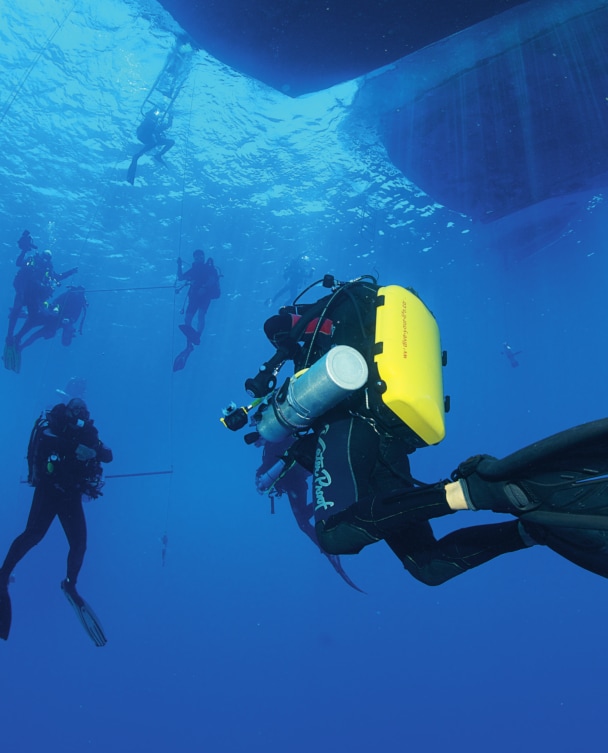
Decompression stages after a deep dive. At six metres, divers flush the rebreather with pure oxygen to accelerate the removal of inert gases.
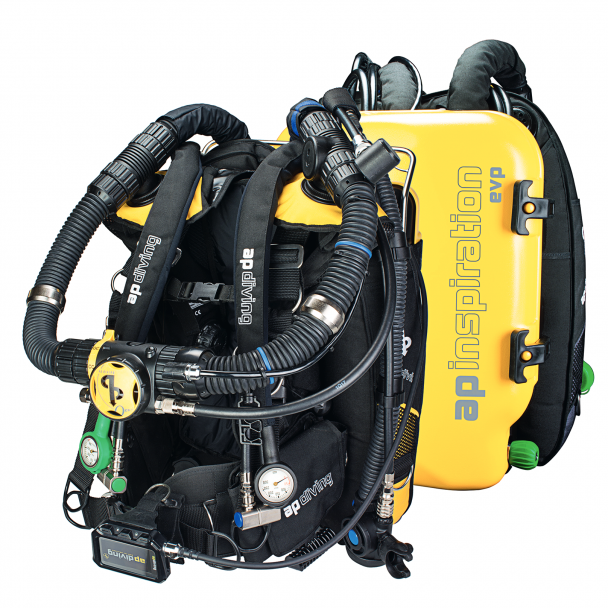
The diver breathes ‘normal’ air in a loop from breathing bags (called counter lungs) that run in front of and above the diver’s shoulders.
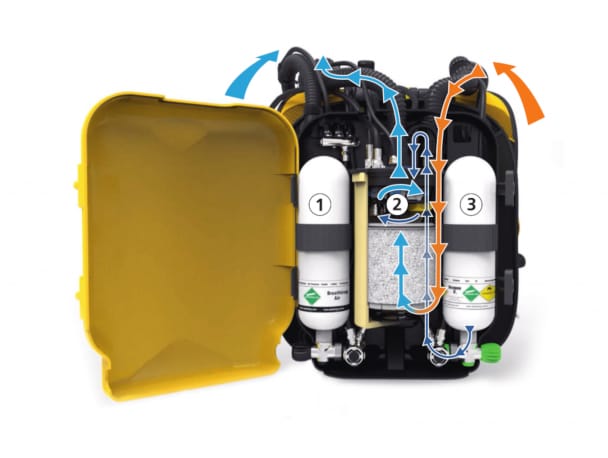
The gas in the loop comes mainly from a small tank of diluent (air or trimix) (1).
The carbon dioxide that is produced by breathing is absorbed by soda lime (called scrubber) in a filter installed between the inhaled and exhaled air (2).
After the CO2 has been removed, the exhaled gas (orange) is analysed by sensors in the filter head. If necessary, an oxygen injection will bring the level back to the correct value. This oxygen comes from a second tank (3).
In 2014, Laurent Ballesta carried out a 24-hour dive at a depth of 20 metres in the French Polynesian Fakarava atoll. For this unusual dive, he used an ‘Inspiration’ electronic closed-circuit rebreather made by British company AP Diving. This rebreather’s high autonomy meant that the small cylinders only had to be recharged every six hours. Moreover, the other remarkable feature of this dive was that the ascent to the surface lasted just two hours thanks to the use of different gas mixtures based on helium, nitrogen and oxygen released at key moments of the immersion. Without these gas changes, decompression would have taken at least eight hours!
THE RELATIVE LIGHTNESS OF REBREATHER DIVING
Rebreathers can, however, break down. As a safety measure, divers must therefore take a backup solution, which considerably adds to their initial minimalist configuration: namely the addition of traditional tanks or, for some, a second rebreather. Given the multitude of ancillary instruments also required, such as lighting, camera equipment and sometimes an underwater scooter as well as waterproof electric heating in the suit, it is clear that even rebreather diving remains highly technical.
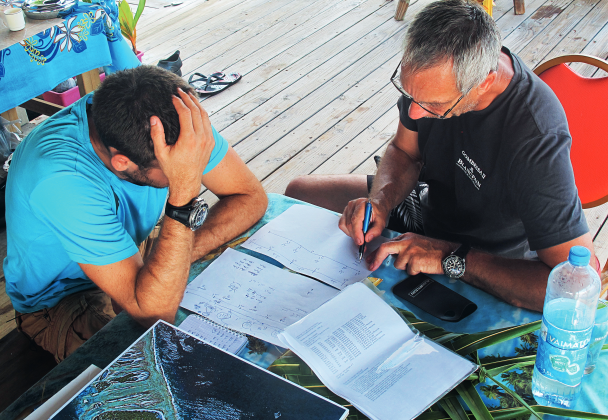
Laurent Ballesta and Jean-Marc Belin studying the parameters of the 24-hour dive. The essential information is written on a slate for the diver and on a board for the surface team.
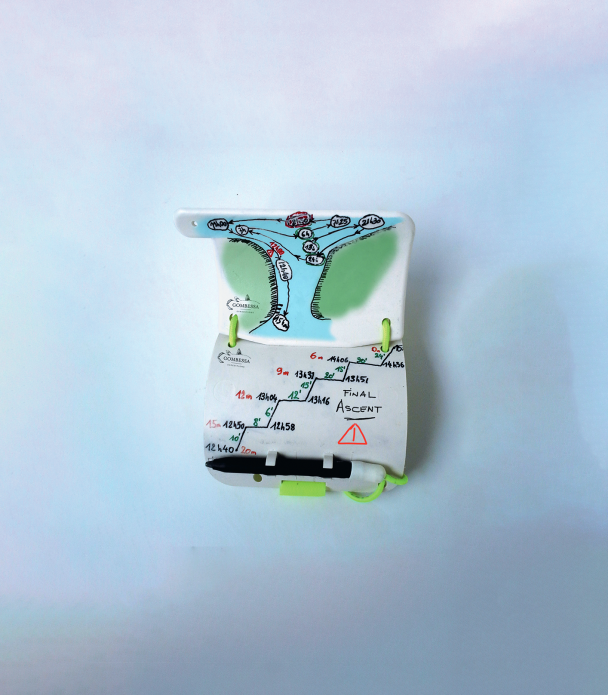
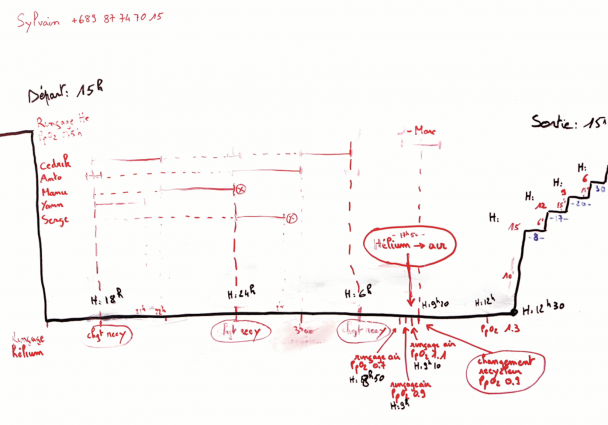
The table summing up the plan for the 24-hour dive, detailing the exact timing for gas changes and the team members who will take turns in accompanying Laurent Ballesta.
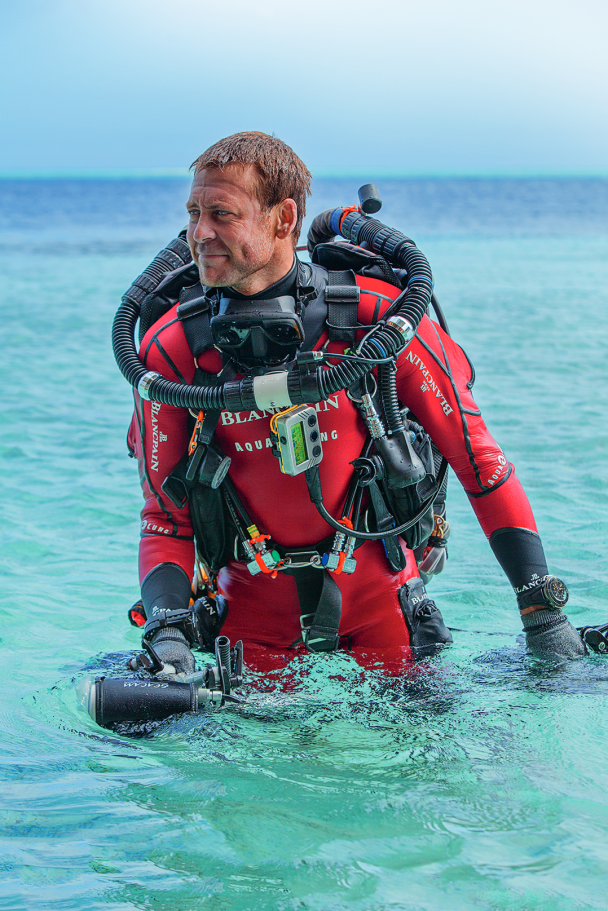
Laurent Ballesta: is that a smile or a grimace? The joy of success mingled with the relief of being able to finally let go of the mouthpiece and remove his fins.
CAVES AND OVERHEAD ENVIRONMENT DIVING
While sea or lake diving is predominant, there is another, more select, field of practice: diving in submerged cavities. Here too, the use of the rebreather and helium-based gas mixtures have made it possible to push back the limits of exploration. In this very distinctive environment, divers do not choose their diving profile, but rather endure it according to the topography of the source they wish to explore. And while caves have little to offer in terms of plant or animal life, their submerged underground formations easily rival the beauties of the sea.
In the world of cave diving, there is a preference for the use of closed-circuit rebreathers where oxygen management is not entrusted to electronics, but instead to an ongoing micro-oxygen leak. The diver manually adjusts the correct value from time to time. The electronics are replaced by an intermittent action on a mechanical injector, but the sensors and the Po2 display remain, ensuring divers always know what they are breathing.
NEW LIMITS
With helium, divers have pushed back the limits imposed by the use of air. Nonetheless, beyond 250 metres, helium causes a new type of ‘narcosis’ – High Pressure Nervous Syndrome (HPNS) – while the density of the gas causes breathing difficulties that can lead to breathlessness. This adds to physiological constraints such as the cold.
To stay even longer underwater, perhaps the solution lies with saturation diving. But that’s a story for another day...

A mineral environment in underground Mallorca. Stalactites, stalagmites, soda straws, helictites and stoup-like formations are found side by side in a baroque calcite fantasy world.
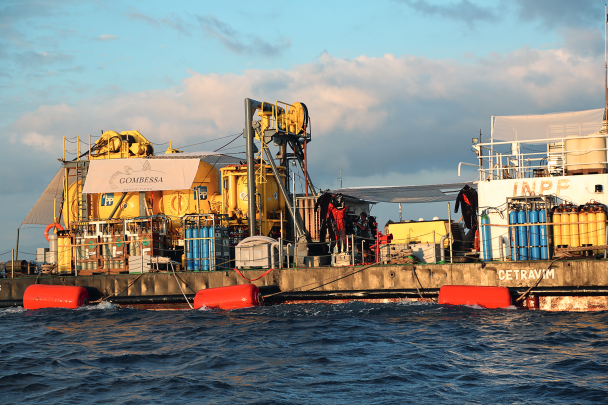
INPP – Institut national de la plongée professionnelle (National Institute of Professional Diving) – saturation equipment. This chamber is a highly effective means of decompression – or rather delayed decompression. It enables diving across several weeks with only one decompression session at the end of the stay.
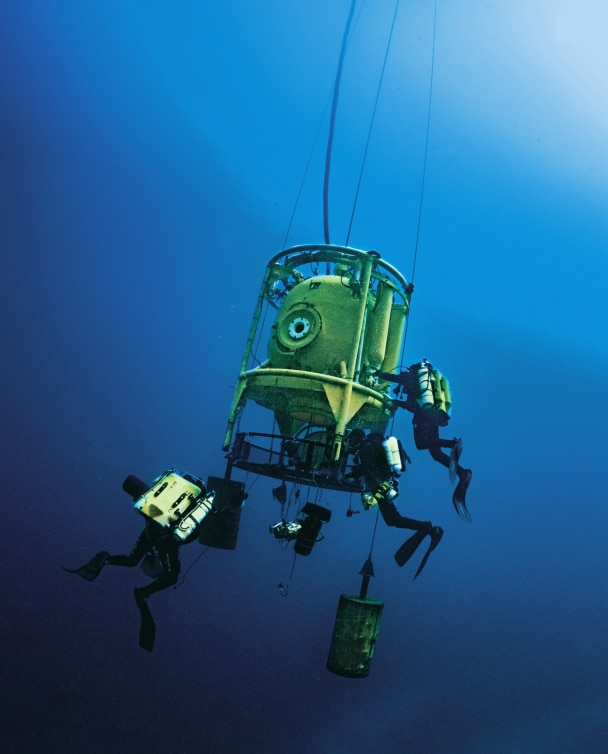
For saturation dives, divers use a sort of sophisticated ‘lift’ called a diving bell, which shuttles between the hyperbaric chamber on the surface and the dive site. And when diving with no umbilical, finding the diving bell is absolutely crucial!
Other issues
Don't miss the latest issue
Sign Up for New Releases

